
NPS Photo 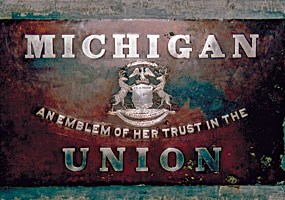
Kathleen Harter 1852Cliff Mine in Keweenaw County installs a 45-ton steam engine for stamping rock and pumping water out of the mine. While this increases output, miners still have to climb nearly 1,000 feet of ladders to get in and out of the mine. Once underground, they work in teams of three, boring holes into rock with only a drill bit and hammers. Drill holes are filled with black powder and exploded to clear waste rock away from the copper masses.The Washington Monument in Washington D.C. receives a memorial stone from the state of Michigan composed of 2,180 pounds of native copper and silver. The copper for the stone comes from Cliff Mine. 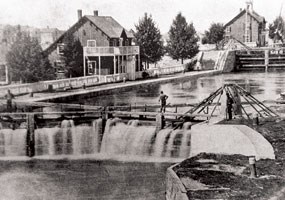
1855With the opening of the St. Mary’s Falls Ship Canal (today known as the Sault or Soo Locks) ships can now travel directly from harbors on Lake Superior to ports in Chicago and Detroit. This advances the ability for copper and other minerals to be transported from the Keweenaw. 1856The Quincy Mining Company begins work on the profitable Pewabic lode. Quincy soon becomes an important copper mine, and earns the nickname "Old Reliable" for its nearly constant profits. 1858Surveyor Edwin J. Hulbert finds an ancient copper cache that leads him to the mineral-rich Calumet conglomerate lode. By 1864, he secures financing for two mining companies: the Calumet Mining Company and the Hecla Mining Company. Hulbert is replaced by Alexander Agassiz in 1867 who will serve as president of the consolidated company until his death in 1910. 1861The Confederate attack on Fort Sumter, South Carolina starts the American Civil War. Demand for brass buttons, copper canteens and munitions increases. Despite the need, copper production at many older and profitable mines in the region actually decreases as new, speculative mines open, causing labor shortages. 1865After four long years and the loss of over 600,000 lives, the Civil War ends with the surrender of Confederate general Robert E. Lee to Ulysses S. Grant at Appomattox Courthouse, Virginia. Copper prices fall as demand wanes at the war’s end. 1871The Calumet & Hecla Mining Company forms after the Calumet and the Hecla mining companies merge. In just one year, C&H produces 16.2 million pounds of copper and pays $2,400,000 ($61.8 million today) to its stockholders. Alexander Agassiz soon becomes president of C&H and aims to provide mine employees and their families with a plethora of resources, including but not limited to, a public library, public school, bathhouse, and medical care. 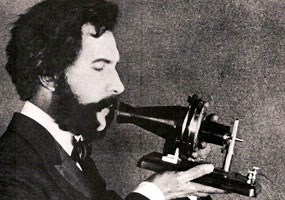
1876"Mr. Watson, come here, I want to see you," heralds Alexander Graham Bell’s successful telephone experiment. Two years later, the first North American telephone exchange, which uses copper wire, opens in New Haven, Connecticut. .jpg?maxwidth=650&autorotate=false)
NPS Photo 1879New technologies are sought to make mining easier. The Rand drill, powered by compressed air, is introduced and adopted at most mines. Until now, most miners still drilled by hand. Nitroglycerin explosives begin replacing black powder. 1887The discovery of copper at a silver mine near Butte, Montana in 1881 transforms the small, poor town into “the richest hill on Earth.” By 1887, Montana mines, such as the Anaconda, are consistently exceeding Michigan mine production. 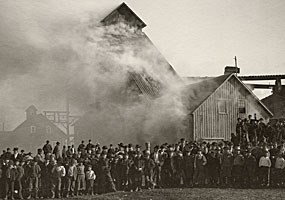
NPS Photo 1895On September 7th, a fire breaks out in C&H’s Osceola mine, spreading more quickly and producing more smoke than workers anticipate. The fire claims the lives of 30 men and boys. While this remains the deadliest single accident in the history of Keweenaw mining, men continue to be killed or seriously injured from cave-ins, misfired explosions, and other mining accidents almost daily. 1898The Red Jacket fire station is built. The building now houses the Copper Country Firefighters Museum, a heritage site for Keweenaw National Historical Park.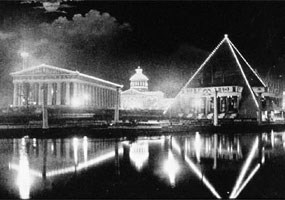
1899As more American homes are lighted and run on electricity demand for copper wire jumps. U.S. copper consumption increases by nearly one third in a single year. 1900The Calumet Theatre opens in Red Jacket. The site will bring a great number of well-known performers to Calumet, cementing its standing in the national scene. The theatre will later become a heritage site for Keweenaw National Historical Park. |
Last updated: July 25, 2024
